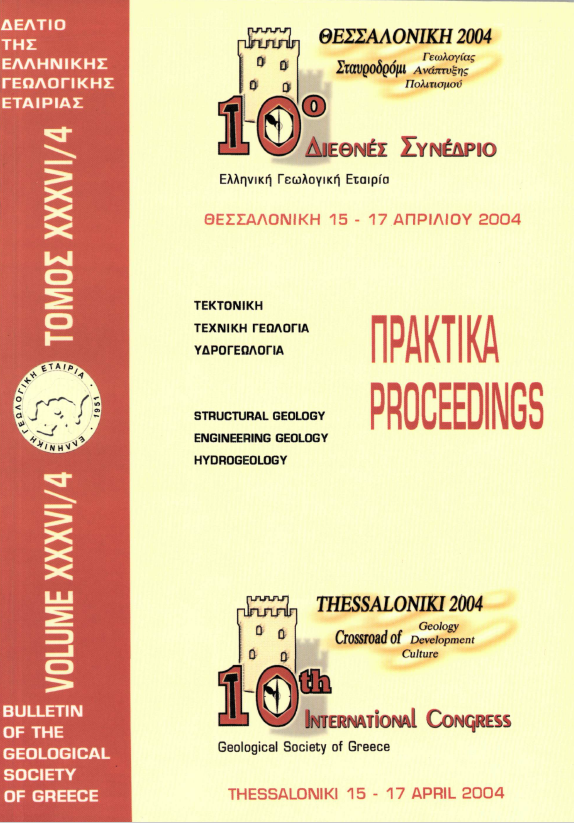TECTONIC GEOMORPHOLOGY OF ESCARPMENTS: THE CASES OF KOMPOTADES AND ΝΕΑ ANCHIALOS FAULTS
Abstract
Most active processes on the surface imply that tectonics and geomorphology converge in a way that landscape change may be used as a tectonic signal, given that erosion and weathering have been taken into account. We selected two faults, the Kompotades and the Nea Anchialos faults in the Sperchios and South Thessaly rift zones respectively, and we performed a morphometric analysis. This analysis comprises geomorphic indices that have been used successfully in studies of active tectonics, as the mountain front sinuosity index (Smf), stream gradient index (SL) and valley floor width to valley height ratio (Vf). At both studied mountain fronts, the Vf index ranged between 0,4 to 1,2, implying high uplift rates, while the Smf «1 index revealed relatively high tectonic activity, which decreases towards the west. On the other hand, the SL index though more sensitive to non-tectonic processes, (i.e. the rock resistance, stream length) is less indicative of tectonic activity. Based on the distribution of the geomorphic indices a two-fault strand model is suggested forming the mountain front in the two examples with the range-ward fault strand to be more appropriate for Kompotades fault and the basinward fault strand for Nea Anchialos fault.
Article Details
- How to Cite
-
Zovoili, E., Konstantinidi, E., & Koukouvelas, I. K. (2004). TECTONIC GEOMORPHOLOGY OF ESCARPMENTS: THE CASES OF KOMPOTADES AND ΝΕΑ ANCHIALOS FAULTS. Bulletin of the Geological Society of Greece, 36(4), 1716–1725. https://doi.org/10.12681/bgsg.16579
- Section
- Tectonics and Geodynamics

This work is licensed under a Creative Commons Attribution-NonCommercial 4.0 International License.
Authors who publish with this journal agree to the following terms:
Authors retain copyright and grant the journal right of first publication with the work simultaneously licensed under a Creative Commons Attribution Non-Commercial License that allows others to share the work with an acknowledgement of the work's authorship and initial publication in this journal.
Authors are able to enter into separate, additional contractual arrangements for the non-exclusive distribution of the journal's published version of the work (e.g. post it to an institutional repository or publish it in a book), with an acknowledgement of its initial publication in this journal. Authors are permitted and encouraged to post their work online (preferably in institutional repositories or on their website) prior to and during the submission process, as it can lead to productive exchanges, as well as earlier and greater citation of published work.



